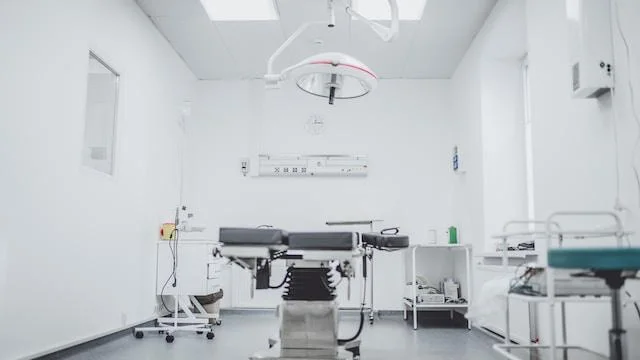When it comes to office design, the exam room plays a pivotal role in creating a functional and comfortable space for both healthcare providers and patients. A well-designed exam room not only enhances the overall patient experience but also contributes to the efficiency of healthcare delivery. In this guide, we will explore essential considerations and steps involved in remodeling a medical office exam room, focusing on creating a space that aligns with the needs of modern healthcare practices.
1. Assessing Current Layout and Functionality:
Initiating the remodeling process involves a meticulous uation of the current layout and functionality of the medical office exam room. Carefully scrutinize the flow of patient traffic, consider accessibility for those with mobility challenges, and assess the strategic placement of essential medical equipment. This detailed assessment forms the cornerstone for pinpointing areas requiring improvement or modification to optimize the space for both healthcare professionals and patients. By addressing aspects such as traffic flow, accessibility, and equipment arrangement, the remodeling efforts can be precisely tailored to enhance overall functionality, ensuring a more efficient and patient-friendly environment.
2. Upgrading Medical Equipment and Furniture:
Upgrading medical equipment and furniture is a crucial element in a medical office design, going beyond aesthetics to incorporate cutting-edge advancements that elevate the entire healthcare experience. Emphasize the importance of ensuring that the exam room is not only stocked with the latest technological marvels but also furnished with ergonomically designed furniture. This strategic fusion of innovation and comfort serves to enhance the efficiency of medical examinations significantly. From state-of-the-art exam tables to advanced diagnostic tools, the integration of modern equipment contributes not only to the functional aspect of the room but also leaves an indelible mark on the overall patient experience, fostering an environment that aligns seamlessly with contemporary healthcare practices.
3. Incorporating Infection Control Measures:
In the evolving healthcare landscape, where infection control has become a paramount concern, it is imperative to prioritize measures that safeguard the well-being of both healthcare providers and patients during the remodeling of a medical office exam room. Thoughtfully consider the integration of features that not only streamline the cleaning and disinfection processes but also prioritize materials and surfaces resistant to pathogens, coupled with a keen emphasis on ensuring optimal ventilation to maintain air quality. These meticulous measures are instrumental in establishing a safe, hygienic environment that aligns with the highest standards of healthcare.
4. Enhancing Privacy and Communication:
Recognizing that privacy holds paramount importance in a medical setting, it is imperative to meticulously uate the layout during the remodeling process, ensuring the maintenance of patient confidentiality. Furthermore, contemplate the integration of advanced communication tools, including intercom systems and updated telemedicine capabilities, to foster seamless interactions between healthcare providers and patients. Striking the delicate balance between preserving privacy and facilitating effective communication is not just a consideration but a key principle in the meticulous design of an exam room that truly meets the evolving needs of modern healthcare practices.
5. Implementing Universal Design Principles:
Embracing universal design principles is paramount to guaranteeing accessibility in the exam room for individuals with diverse needs. Deliberate on incorporating features such as adjustable examination tables, easily accessible handrails, and prominent signage, ensuring an environment that not only fulfills regulatory requirements but also significantly enriches the overall patient experience. By prioritizing inclusivity through thoughtful design, healthcare services become truly accessible to everyone, reinforcing the commitment to equitable and patient-centric care.
6. Maximizing Storage and Organization:
In the pursuit of maximizing storage and organization within the exam room, it is imperative to prioritize efficient storage solutions. Invest judiciously in intelligent storage options that not only accommodate medical supplies, equipment, and patient records but also contribute to fostering a clutter-free and meticulously organized environment. This commitment to a well-organized space not only facilitates the smooth workflow of healthcare professionals but also enables them to concentrate on patient care without being burdened by unnecessary distractions, promoting an optimal and streamlined healthcare delivery process.
Conclusion:
In conclusion, the thoughtful and strategic remodeling of a medical office exam room, encompassing elements like assessing the layout, upgrading equipment, prioritizing infection control, enhancing privacy and communication, incorporating universal design principles, and maximizing storage, enables healthcare providers to craft a modern and efficient space. Such well-designed exam rooms not only enhance overall functionality but also foster a positive patient experience, ultimately bolstering the delivery of high-quality healthcare services.

